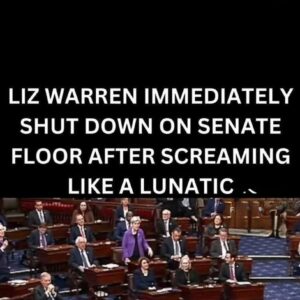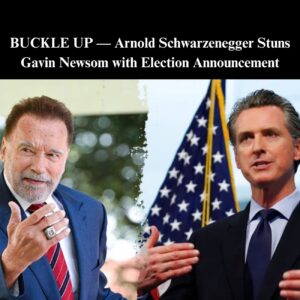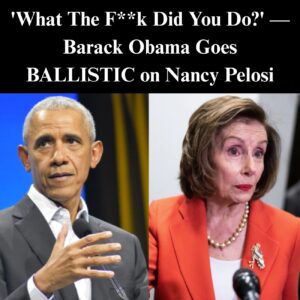Former President Barack Obama stirred both excitement and controversy over the weekend after sharing an update about the long-delayed Obama Presidential Center, which is scheduled to open next year on Chicago’s South Side.
In a post published on Saturday, Obama described the center as a space designed to inspire collaboration and social progress.
“When the Obama Presidential Center opens next year, it will be a hub for change — a place for people from all over the world to come together, get inspired, and take what they learn back to their own communities,” he wrote.
The message, intended as a hopeful reflection of the center’s mission, quickly drew thousands of reactions online. Supporters praised Obama’s continued engagement in civic life, while critics seized on the word “change” — a central theme of his 2008 campaign — to question what exactly that means in practice.
A Symbol of Legacy — and Controversy
The Obama Presidential Center, which broke ground in September 2021, has faced a host of challenges: construction delays, lawsuits, and rising costs that have pushed the project far beyond its original budget.
According to the Obama Foundation, the center will occupy nearly 20 acres of the historic Jackson Park, part of a broader 540-acre area along Lake Michigan. The site will include a museum, a public library branch, a recreation and athletic center, landscaped gardens, and a children’s play area.
Initially estimated at $500 million, the privately funded project has since ballooned in cost — with recent reports suggesting it could exceed $700 million by the time it opens.
Obama and his supporters have long described the center as a symbol of hope and community revitalization. But for many Chicago residents, especially those in nearby neighborhoods, the center has become a lightning rod for concerns about gentrification, displacement, and broken promises.
Local Concerns Mount as Costs Rise
Residents of Chicago’s South Side, where Obama began his career as a community organizer decades ago, have voiced growing unease about the project’s impact on their neighborhoods.
“What was meant to be a tribute to Obama’s legacy has turned into a source of frustration for a lot of people living here,” said Kyana Butler, a member of the activist group Southside Together, which has been lobbying the Obama Foundation to strengthen its commitments to local housing and affordability.
“Rents are going up fast,” Butler told the Daily Mail. “A two-bedroom apartment that used to rent for $800 a month has already jumped to $1,800. Property taxes are going up so much that the owner of my building is saying she might just walk away.”
Those concerns have been echoed by other community organizations, including Stop the Displacement, a coalition that has called for stronger protections for low-income residents and more transparency from the Obama Foundation.
The group argues that while the center may bring tourism and jobs, it also threatens to price out the very people it was supposed to benefit.
Delays, Lawsuits, and Design Disputes
The Obama Presidential Center’s path has been anything but smooth. Since breaking ground four years ago, the project has faced several lawsuits — many centered on environmental and zoning concerns related to its location in Jackson Park, a site listed on the National Register of Historic Places.
Critics say the center’s construction has altered the park’s landscape and limited public access to green space. The Obama Foundation has countered that the design was approved through an extensive public review process and that the project will ultimately make the park more vibrant and accessible.
The delays have also been tied to labor disputes, supply chain issues, and shifting design requirements. What began as a sleek, modern concept has evolved into a sprawling complex that some architecture critics have called “monolithic” or “out of step” with the surrounding area.
Still, Obama remains confident that the finished center will serve as a beacon of learning and leadership.
“We want this to be a place where people of all backgrounds can come together to find solutions, build community, and drive progress,” he said in a statement last month.
Online Reactions: A Mix of Admiration and Amusement
While the construction site buzzes with activity, the internet’s reaction to Obama’s post was a different kind of spectacle.
Within hours, his message about creating a “hub for change” sparked a wave of commentary across X (formerly Twitter), Facebook, and Instagram. Some users celebrated the milestone, expressing pride in seeing a major presidential landmark built in Chicago — especially one honoring the nation’s first Black president.
Others, however, responded with sarcasm or skepticism, poking fun at Obama’s vague phrasing and the project’s troubled history.
“Change… what exactly are we changing this time?” one user joked on X.
“Behind schedule, over budget, and surrounded by lawsuits — sounds like the perfect monument to modern politics,” another quipped.
Memes featuring photos of the construction site and edited versions of Obama’s famous 2008 campaign slogan, “Change We Can Believe In,” quickly began circulating online.
The contrast between Obama’s uplifting tone and the public’s more cynical reactions highlighted the complicated legacy he continues to navigate — admired by millions but still a divisive figure in parts of the country.
The Neighborhood Divide
While national reactions range from nostalgic to critical, the most intense opinions come from residents living near the construction zone.
Local activists say that despite years of meetings and promises, the Obama Foundation has not done enough to prevent displacement. They’ve called for a Community Benefits Agreement (CBA) — a legally binding contract ensuring affordable housing, job guarantees for local workers, and protections for small businesses.
So far, the foundation has resisted a formal CBA, instead pledging voluntary investments in job training and community programming.
That hasn’t satisfied everyone.
“We respect President Obama and what he’s done,” Butler said. “But this project doesn’t feel like it’s for us anymore. It feels like it’s for tourists, for investors, for everyone except the people who actually live here.”
What Comes Next
Despite the controversy, construction of the Obama Presidential Center is now nearing completion, with the opening projected for late 2026. Once finished, the complex is expected to draw hundreds of thousands of visitors each year and create more than 5,000 permanent and temporary jobs.
The Obama Foundation has also announced plans to launch educational initiatives, youth leadership programs, and public events centered on civic engagement and democracy.
Still, whether those efforts will repair tensions with the surrounding community remains uncertain.
Urban development experts note that similar projects — such as the Clinton Presidential Center in Arkansas or the George W. Bush Presidential Library in Texas — revitalized their local economies but also contributed to higher property costs.
“The challenge for the Obama Center is to find a balance between global impact and local inclusion,” said Dr. Alana Pierce, a professor of urban studies at DePaul University. “If it succeeds, it could be a model for how presidential libraries can serve as engines for community growth. If it fails, it will be remembered as a missed opportunity.”
A Legacy Still in the Making
For Obama, the center represents the physical embodiment of his vision — one that blends public service, education, and activism. But as his latest post demonstrated, even the most inspiring messages can reignite old debates about progress, privilege, and priorities.
As the project nears completion, the former president remains optimistic.
“The Obama Presidential Center is not about me,” he wrote. “It’s about what we can build together.”
Whether that vision will bring the community together or drive it further apart is a story still being written — one brick, lawsuit, and online meme at a time.




